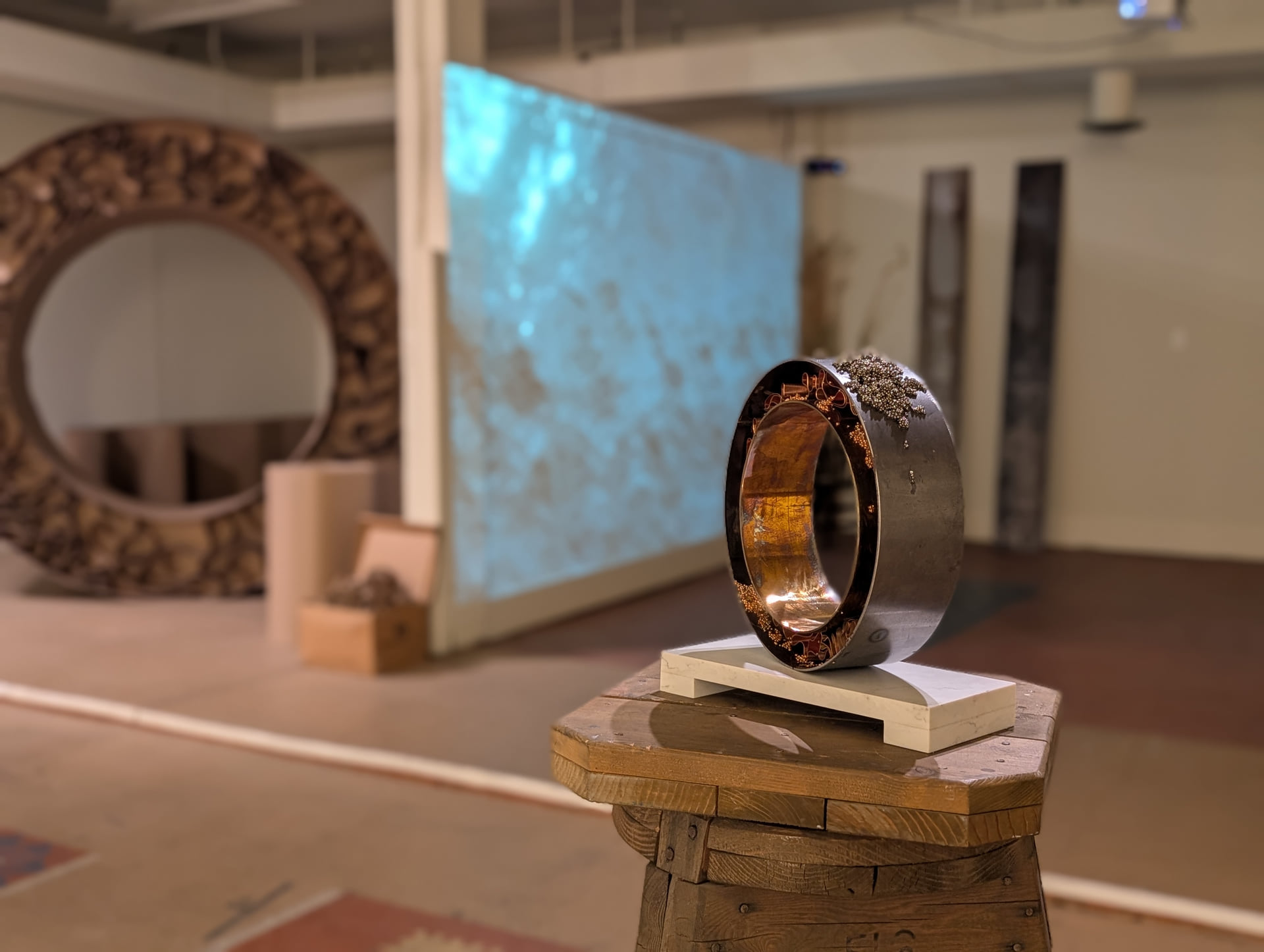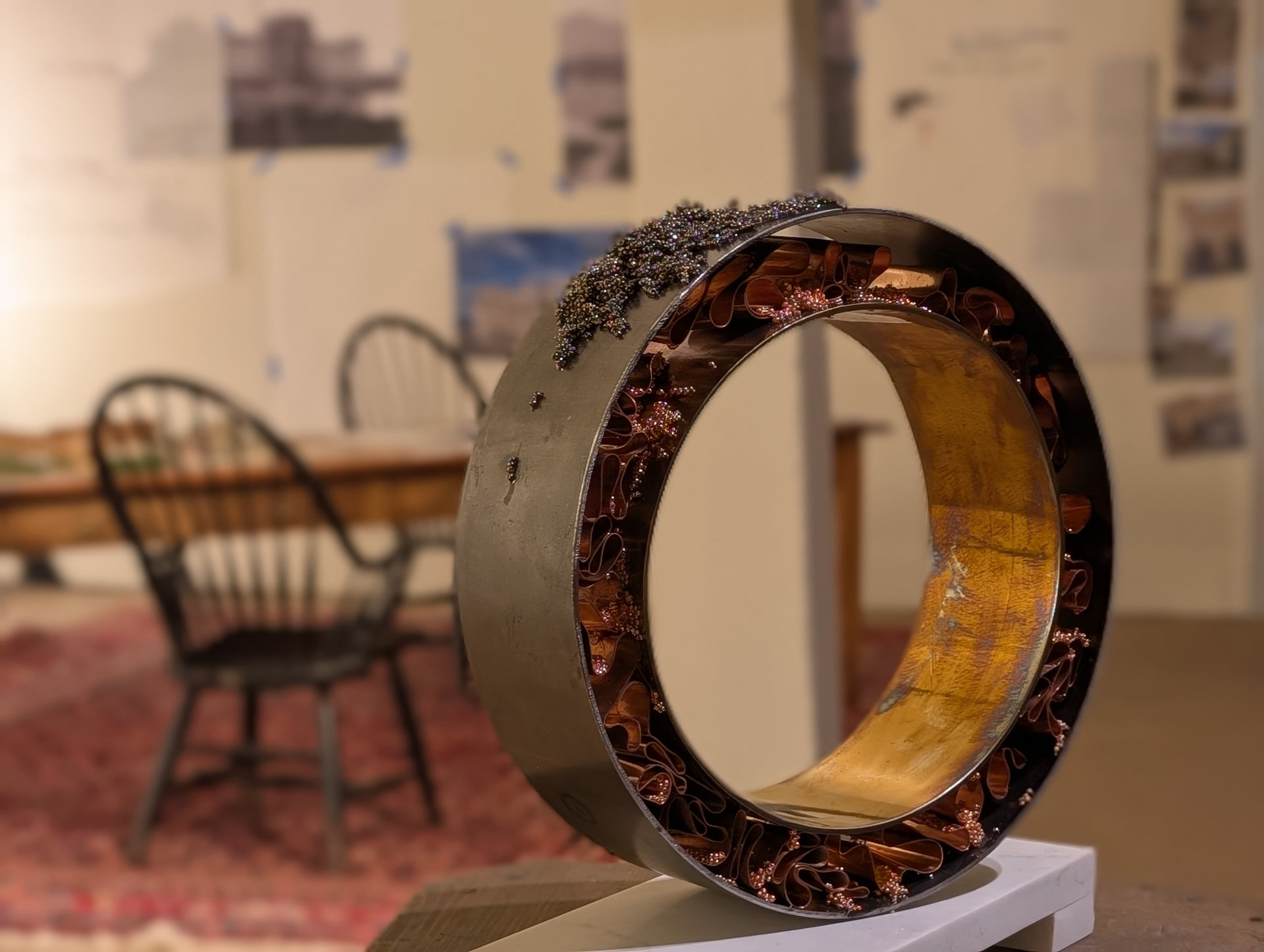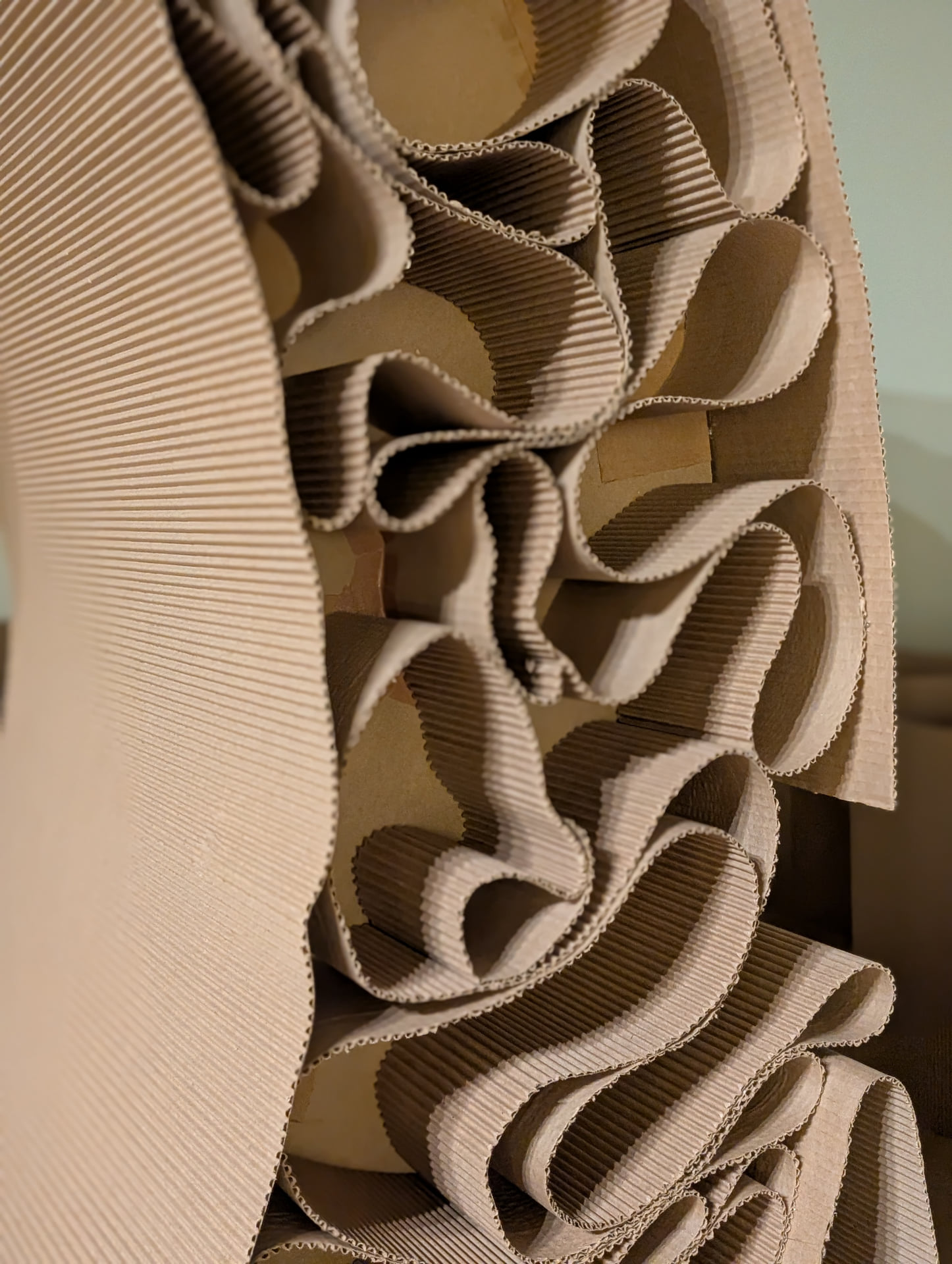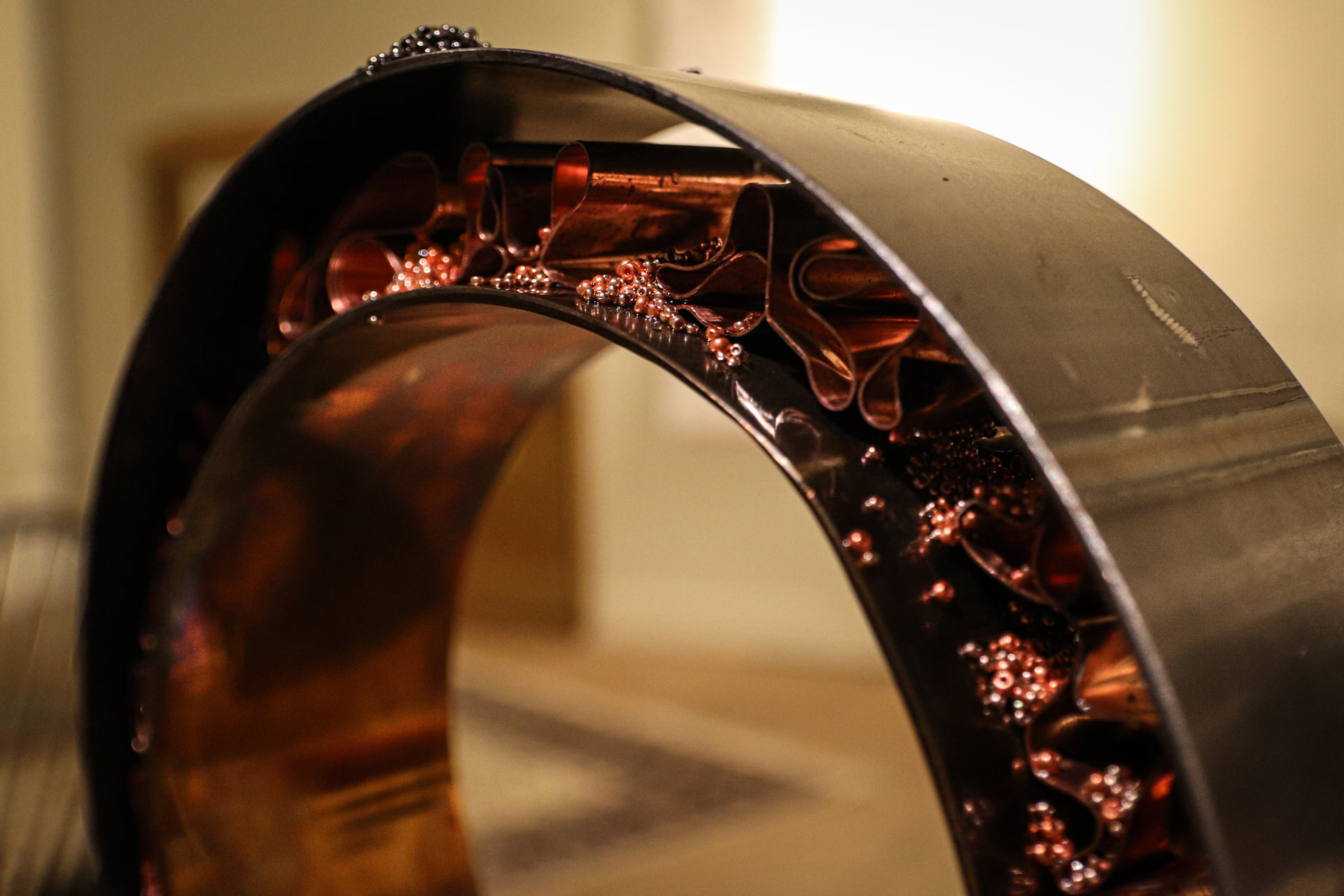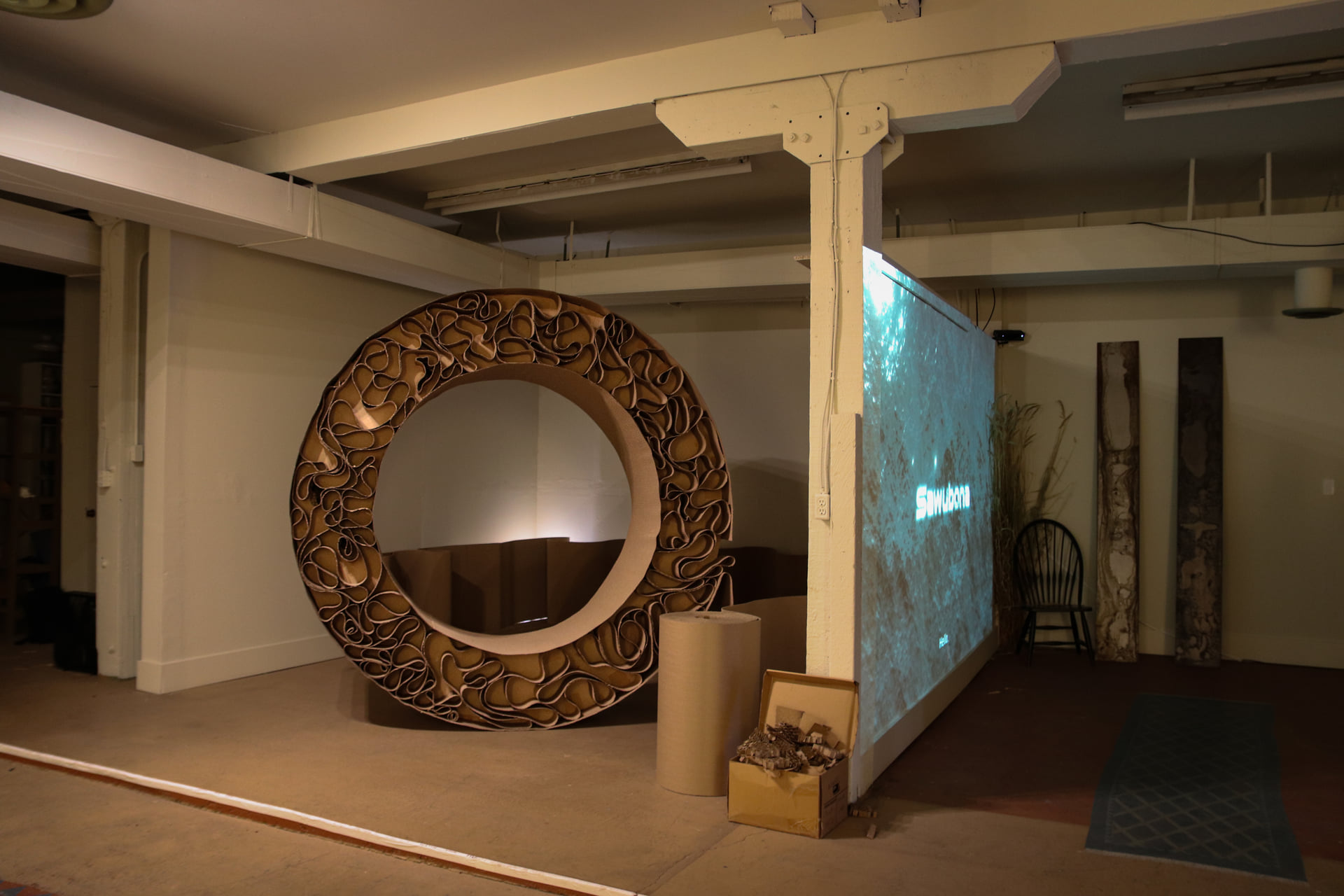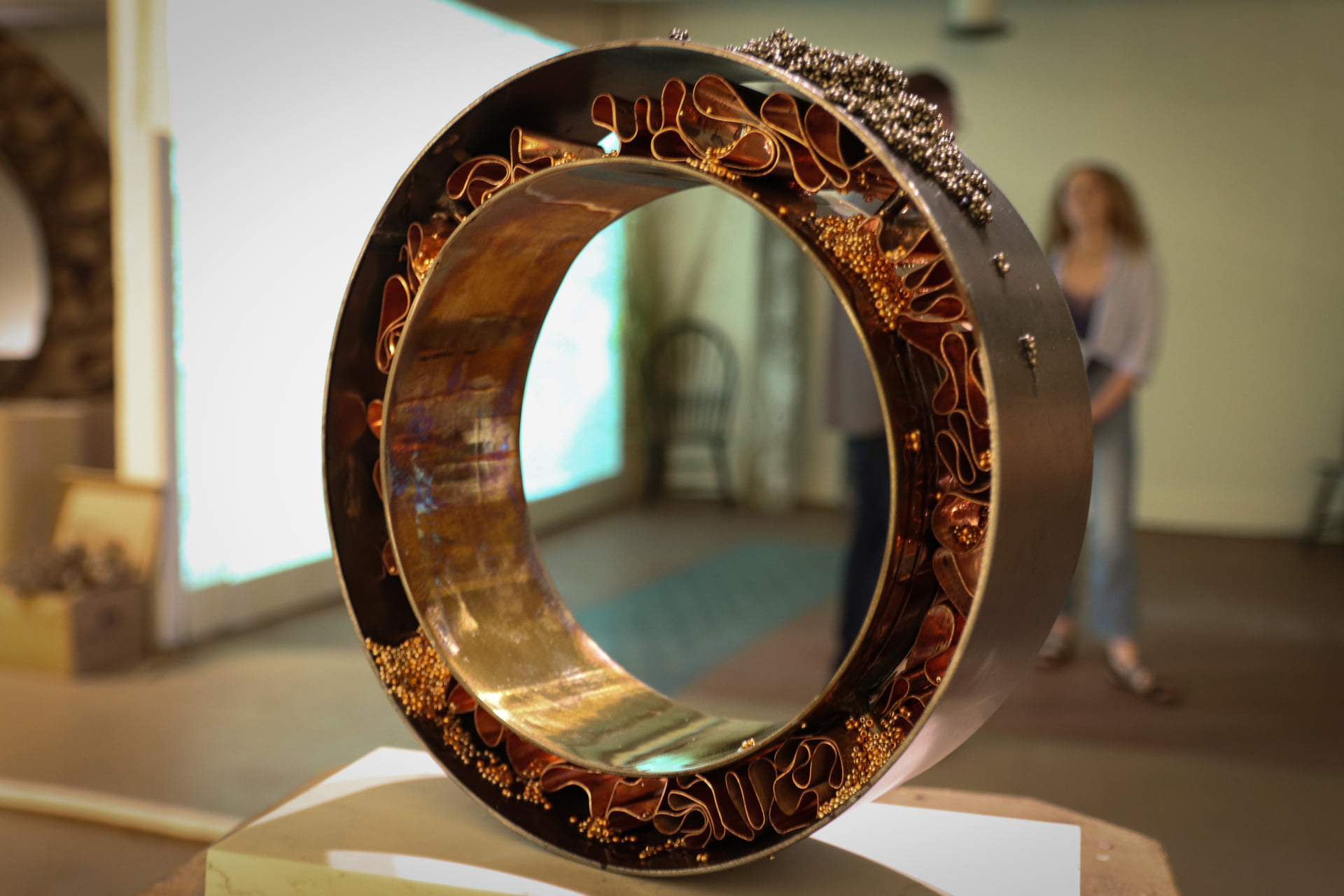Ukuzwana (Harmony)
Simphiwe Buthelezi, South Africa
Description
Title: Ukuzwana (prototype)
Medium: Hexacomb cardboard sheet, corrugated cardboard
Dimensions: Variable
Title: Ukuzwana (Maquettes)
Medium: Bronze, Steel, Copper, Glass beads, Swarovski beads
Dimensions: 30,4 cm diameter
Variable Edition of 3
My artistic journey, which is an exploration of the aquatic, has brought me to the Pacific.
During my residency with the Vancouver Biennale, I have been engaging with water as a sentient being. I attempt to tap into its memory, to peel back the layers of urbanization that have contributed to its erasure. In my navigation of the city, I came to the historic Pacific Central Station. Impressed by its grand architecture, I was prompted to reflect on the themes of migration, “progress,” and my own arrival on this land.
The archival research around the studio, and material experimentation with bamboo reed mats, beads, and cardboard, became a view into the process I’ve followed to arrive at a vision for a monumental public sculpture. Working with IE Creative, I developed a maquette that takes the form of a ring — a copper, wave-like coiling on the interior that almost appears to burn with light as the sun pours into it.
I titled this sculpture Ukuzwana — a Zulu word that speaks to harmony, mutual understanding, and connection. Initially, I envisioned it within the Pacific Central Station. I now see it thriving beyond the station’s periphery—visible along the shores of False Creek, its inner ring catching the sunlight and reflecting in the water.
I would like this sculpture to serve as a monument to the past, present, and future of the water. It honours the souls that the water carries and nurtures: spirits of the waters, people who were water people who have gone back into the waters, and those whose movement was interrupted by the filling of the inlet and its streams.
The sites along False Creek carry overlapping histories of belonging, displacement, and erasure — from the Musqueam, Squamish, and Tsleil-Waututh peoples of this land, to the Chinese and Black communities, to the area’s industrial past now obscured by development. These stories echo the story of the water here: its interruption, control, and attempted containment.
This project looks critically at that history and imagines a different future — one where the resilience of water prevails, and where remembrance becomes a pathway to restoration.
